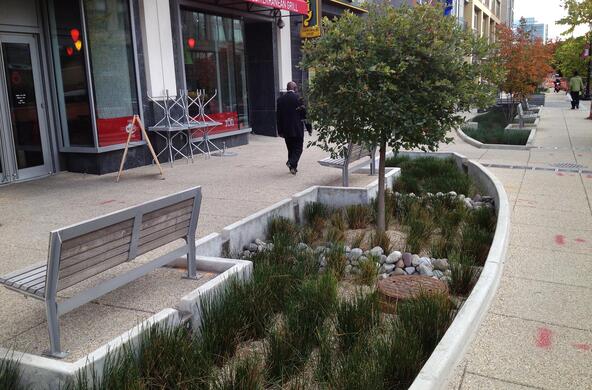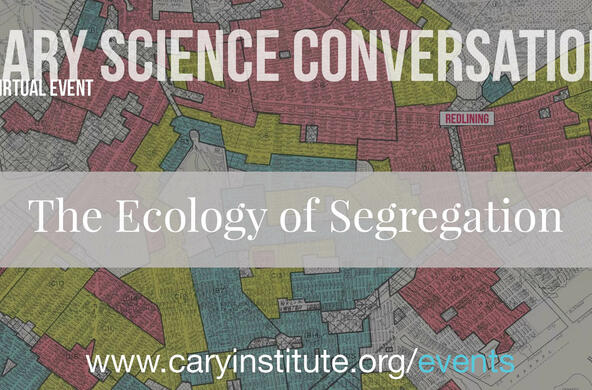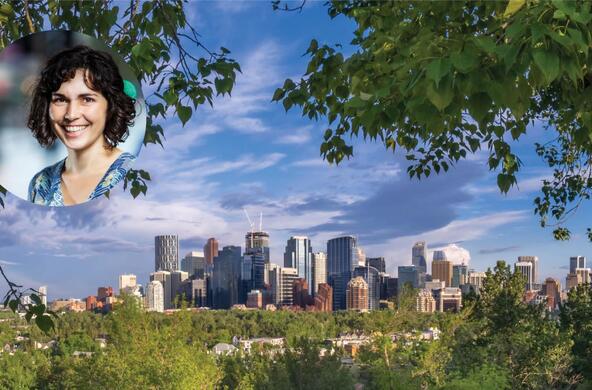A new study of 20 years of precipitation, pollution and water quality data has traced degradation of Baltimore's Gwynns Falls to frequent sewage leaks, and some environmental improvements to projects to clean up or reduce stormwater runoff.
Researchers at the U.S. Geological Survey, Blue Water Baltimore and the Cary Institute of Ecosystem Studies tracked changes in water quality from 1998 to 2014.
Using data on everything from precipitation to road salt to sewage leaks, they calculated the impact of each variable on stream health in the Gwynns Falls watershed, which covers western Baltimore and much of western Baltimore County.
“We’ve known a long time, sewage bad, stormwater projects good,” said Alice Volpitta, water quality manager for Blue Water. “Now we can say with scientific certainty that that is the case, and that carries a lot of weight.”
The researchers found that rain gardens and retention ponds — projects used to reduce the amount of runoff going directly into storm drains and eventually the Chesapeake Bay — were associated with water quality improvements.
Large rainfall events that trigger massive leaks of sewage from Baltimore’s antiquated system of pipes were associated with worsened water quality.
“This is the first time with statistical accuracy we can say sewage is really detrimental to water quality,” Volpitta said.
Peter Groffman, professor at the City University of New York Advanced Science Research Center and a senior research fellow at the Cary Institute of Ecosystem Studies in New York, said long-term data “is the only way to know for sure whether our investments in clean water infrastructure are working.”
“Even with 20 years of water quality data, we are just beginning to see the long-term effects of sewage overflows and water main breaks, along with the stormwater projects that are designed to address polluted runoff,” Groffman said.
The water quality data came from the Baltimore Ecosystem Study, a National Science Foundation-funded inquiry established more than 20 years ago. Other data, on possible influences to water quality, came from Baltimore and Baltimore County governments.
The research also showed a statistically significant increase in precipitation over the research period.
In a release, Blue Water Baltimore said it “is deeply concerned about stronger storms and greater rainfall, which over the years have been exacerbating pollution from stormwater runoff and putting more pressure on our sewage pipes and” best management practices.
The report said many of the factors that make the Gwynns Falls “wetter” can be linked to increases in precipitation were in the winter.
Volpitta said that’s important to know because during the winter, projects to reduce stormwater runoff are the least effective, since the ground is frozen and plants are dead or dormant.
“We’re facing a changing climate,” Volpitta said. “It makes the investment all the more important now. It’s going to get more costly as time goes on. The problem isn’t going to go away all on its own.”
Citation
Emily H. Majcher, Ellen L. Woytowitz, Alexander J. Reisinger, and Peter M. Groffman. Factors affecting long-term trends in surface-water quality in the Gwynns Falls watershed, Baltimore City and County, Maryland, 1998–2016. USGS Publications Warehouse. DOI: 10.3133/ofr20181038
Blue Water Baltimore joined forces with USGS and the Cary Institute of Ecosystem Studies through the Baltimore Urban Waters Partnership to analyze over 20 years of surface water quality data in the Gwynns Falls watershed.





